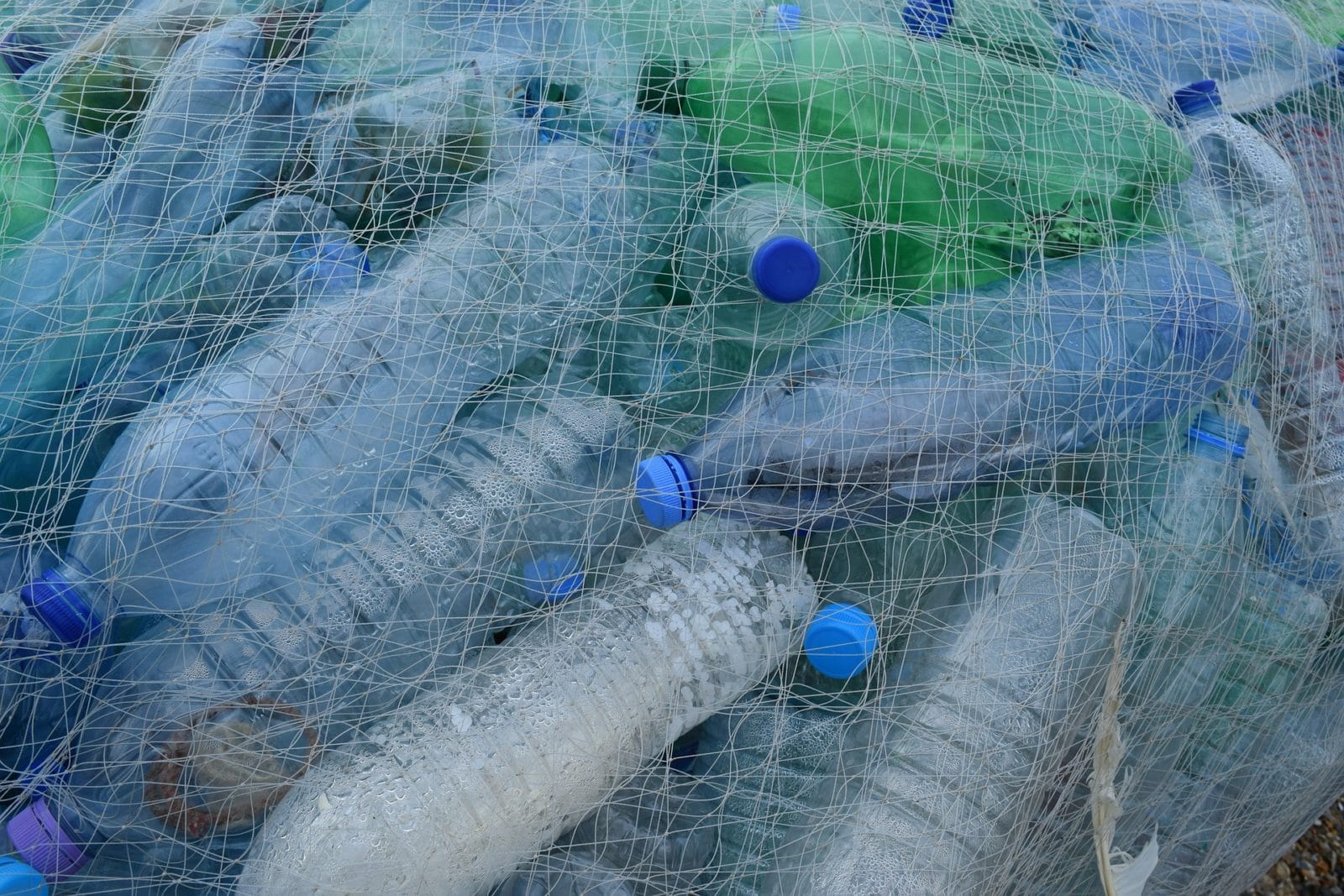Some quick background.
BPA is a cheap additive that, when combined with plastic forms polycarbonate - producing strong, impact-resistant, easily molded and often optically transparent products used in … basically everything; electronic components, construction materials, CDs DVD’s Blu-ray disks and their cases, water bottles, aircraft components, eyeglass lenses, medical equipment, even the sleek unibody of your cellphone. The list really is quite endless.
First created in 1891, it has been used commercially since the 1950s and is now one of the most commonly produced chemicals in the world, with 3.6bn metric tons of BPA generated every year.
In the spring of 2008, the Government released findings to the possible health risks of BPA. Parents were alarmed, pediatricians flooded with questions, and stores quickly sold-out of BPA-free bottles and sippy cups. It’s actually quite a disgusting story with conflicts of interest, government's BPA consultants and contractors working for BPA manufacturers, and error-laden assessments. The full timeline of this debacle can be found here.

Up until now, there has been a lot of fearmongering, misinformation, and more critically, a lack of studies to determine how widespread BPA exposure is, and whether changes in lifestyle and diet could have an impact on BPA in our bodies. A recent paper released in early 2018 gives us some insight into exactly this.
Where do things stand in 2019?
Below I list the facts as I discovered in researching this:
- Firstly, the biggest problem:
- BPA is pervasive. It is used everywhere, and whether or not consumption or direct contact takes place, it leaches into the environment and works its way into the food system

-
- In a recent 2018 study, 86 percent of teenagers have traces of BPA in their bodies.
- This is (at least) better than a 2013 study(1) that BPA was identified in nearly all adults and children tested.
- Because of this pervasiveness, a direct causal relationship is extremely difficult to identify in humans, and we have to rely on other evidence – largely based on animal studies, which may not directly translate to humans
- The problem is that it is hard to get concrete proof that BPA is definitively involved in many of these diseases.
- “Obviously it’s not ethically possible to experiment with humans, so most of the studies have been in test tubes or animals, and then scientists extrapolate from that what might be happening in humans,” says Tamara Galloway, a professor of ecotoxicology at the University of Exeter. “There have also been epidemiological studies where we measure the concentration of BPA in people’s bodies, look at what they’re suffering from, and then infer an association. But because you can’t establish a direct causal link, it’s hard to make strong conclusions, and that’s what causes the controversy.”
- BPA mimics the action of the hormone estrogen and disrupts the endocrine system - a hormone that helps us develop when we’re young and eventually reproduce (2)
- BPA has been widely detected in blood, urine, amniotic fluid and breast milk, and has been found in nearly all adults and children who have been tested (1)
- Scientists are concerned about BPA’s effects on fetuses, infants, and children at current exposure levels, and whether it can affect the prostate, brain, testicles, breasts, and behavior (3)
- There is concern about the impact of BPA on early puberty in girls.
- A 2009 research article reported that men who were exposed to very high levels of BPA at work had less sexual desire and were four times as likely to have problems with sexual function than men who did not work with BPA (4)
- The biggest concerns have been the impact on fetuses and young children, who have underdeveloped systems for detoxifying chemicals – the consequences being that the younger you are, the higher the levels of BPA in your body, and they are less efficient at eliminating substances from their systems.
- Brain and behavioral problems
- After a review of the evidence, the National Toxicology Program at the FDA expressed concern about BPA’s possible effects on the brain and behavior of infants and young children.
- After studies of rats and mice linked BPA to hyperactivity and brain activity, the first study of nonhuman primates found that BPA levels were associated with cognitive problems that could affect learning and memory. (5)
- Cancer
- Some animal studies have shown a possible link between BPA exposure and a later increased risk of cancer (6)
- A study published in October 2008 also found that cancer cells exposed to low levels of BPA were more resistant to chemotherapy (7)
- Possible heart problems
- In the fall of 2008, a major study was published in the Journal of the American Medical Association indicating that adults with higher levels of BPA in their bodies were more likely to be diagnosed with diabetes or heart disease (8)
- Adults with higher BPA were also more likely to be obese, but diabetes and heart disease were correlated with BPA levels even when obesity was statistically controlled.
Can anything be done to reduce exposure?
2018 public engagement research at the University of Exeter led by Professor Lorna Harries, Associate Professor in Molecular Genetics, and Professor Tamara Galloway, Professor of Ecotoxicology identify some of the first real-world answers to this question.
The research, ‘An engaged research study to assess the effect of a ‘real-world’ dietary intervention on urinary bisphenol A (BPA) levels in teenagers is the largest self-administered intervention study of exposure to BPA in unrelated individuals’ was specifically designed to quantify the effect on BPA levels by changing behaviors – what you eat, drink, touch, etc.
Before we get to the conclusions, there are two important facts highlighted in the paper:
- The good news is that BPA passes relatively swiftly out of the body with a short half-life of around 6 hours, but measurable BPA was detected in 86% of the participating students, with an average level of 1.9ng/ml. This is similar to population exposure levels in other countries around the world, and reflects the exposure to BPA in the environment.
- Leaching of BPA from products can increase with higher temperatures and with time and use, for example through repeated use of plastic water bottles if they contain BPA.

The study concluded:
- Professor Harries, Associate Professor of Molecular Genetics at the University of Exeter, said: “Our study shows that currently we do not have much of a choice about being exposed to BPA. We believe that much better labelling of products containing BPA is needed so people can make an informed choice”.
Final Thoughts
I started writing this article with a view of getting a better understanding of BPA, and finding what (as a parent) I should be doing to minimize exposure. To be honest, I’m feeling deflated at the futility of the findings, and the realization that this is a much broader problem that has to be addressed.
I applaud the efforts by companies to replace BPA with other bisphenols that do the same role, albeit at much higher cost. I am heartened to hear that BPA’s remain in the system for only 6 hours. I’m disgusted by the coverups and conflicts of interest that led to the pervasiveness of this chemical in our society, and I’m dismayed at the multitude of potential health issues linked to this chemical.
This is a global problem and to remove the risks associated with it, we need to embrace a solution – the unfortunate situation is that the solution comes at a price, and with no legislation to enforce such a solution, the risks of recontamination (or constant contamination) are all but certain.
Consumers can still take steps to avoid BPA and their potentially harmful alternatives entirely by steering clear of plastics with the recycling numbers 3, 6, and 7, which all contain compounds of concern. Don’t put plastics in dishwashers or the microwave, which can damage them and cause them to leach more BPA or its alternatives. Throw away plastic when it looks aged or scratched. And opt for glass or steel containers rather than lined aluminum cans whenever possible.
There’s a small glimmer of hope at the end of the plastic rainbow. The good news is, if we can eliminate all of these things from the face of the world, things will return to normal.
References
(1) Rochester JR, et al. Bisphenol A and human health: A review of the literature. Reproductive Toxicology, 2013.
(2) Schierow, L., Lister, S.A. (2008, May). Bisphenol A (BPA) in Plastics and Possible Human Health Effects. Congressional Research Service Report for Congress, The Library of Congress
(3) National Toxicology Program. U.S. Department of Health and Human Services (HHS). (2008, September). NTP-CEHR Monograph on the Potential Human Reproductive and Developmental Effects of Bisphenol A. Retrieved April 3, 2009 from http://cerhr.niehs.nih.gov/chemicals/bisphenol/bisphenol.pdf
(4) Li, D., Zhou, Z, Qing, D., et al. Occupational Exposure to Bisphenol-A (BPA) and the Risk of Self-Reported Male Sexual Dysfunction. Human Reproduction, online publication, 1-9. doi:10.1093/humrep/dep381
(5) Leranth, C., Hajszan, T., Szigeti-Buck, K., Bober, J., and Maclusky, N.J. (2008). Bisphenol A prevents the synaptogenic response to estradiol in hippocampus and prefrontal cortex of ovariectomized nonhuman primates. Proceedings of the National Academy of Sciences of the United States of America. PNAS, 105(37), 14187-14191.
(6) Prins, G.S., et al. Bisphenol A Promotes Human Prostate Stem-Progenitor Cell Self-Renewal and Increases in vivo Carcinogenesis in Human Prostate Epithelium. Endocrinology, 2014.
(7) LaPensee, E.W., Tuttle, T.R., Fox, S.R., & Ben-Jonathan, N.B.(2008). Bisphenol A at Low Nanomolar Doses Confers Chemoresistance in Estrogen Receptor Alpha Positive and Negative Breast Cancer Cells. Environmental Health Perspectives, 117 (2), 175-180.
(8) Lang I.A., Galloway T.S., Scarlett A. et al. (2008). Association of Urinary Bisphenol A Concentration With Medical Disorders and Laboratory Abnormalities in Adults. Journal of American Medical Association 300(11),1303-1310.

